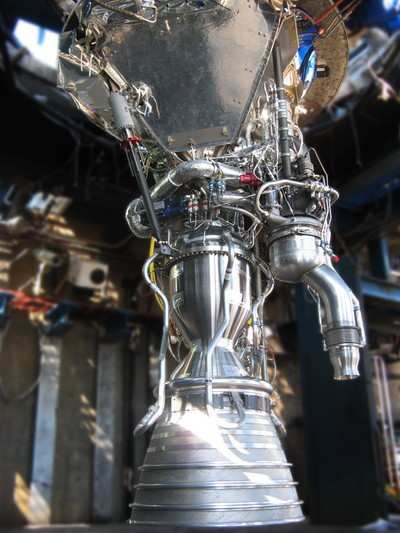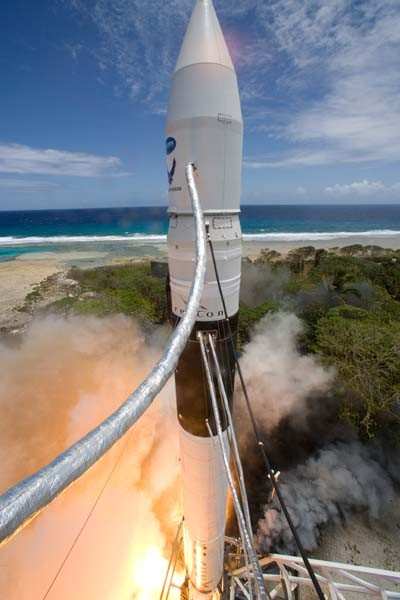Final Production Design Cleared For Spring 2008 Flight
Space Exploration Technologies Corp. (SpaceX) told ANN late
Wednesday the company has completed the qualification testing
program of its Merlin 1C next generation liquid fueled rocket
booster engine for use in the Falcon 1 rocket.

Tests were conducted at the SpaceX Texas Test Facility near
Waco, TX on a Merlin 1C configured for powering the first stage of
a Falcon 1 rocket. After completing development testing in November
2007, the qualification program began to verify the final design
features on an actual production engine, clearing the way for
full-scale manufacturing.
"Our propulsion and test teams finished the qualification
program with a record-breaking day that included four full mission
duration firings on the engine," said Tom Mueller, Vice President
of Propulsion for SpaceX. "This marathon run brought the total
operating time on a single engine to over 27 minutes, which is more
than ten complete flights. The engine meets or exceeds all
requirements for thrust, performance and durability."
"This was the final development milestone required for the next
Falcon 1 flight," said Elon Musk, CEO and CTO of SpaceX. "In the
coming weeks we’ll begin qualifying Merlin for the higher
thrust and performance levels required by our Falcon 9 rocket,
keeping us on track for delivering the first Falcon 9 vehicle to
Cape Canaveral by year end."
The single Merlin 1C will power SpaceX’s next Falcon 1
mission, scheduled to lift off in Spring 2008 from the SpaceX
launch complex in the Central Pacific atoll of Kwajalein. The far
larger Falcon 9 uses nine Merlins on the first stage, and a single
Merlin in vacuum configuration powers the Falcon 9 second
stage.
The Merlin 1C is an improved version of the Merlin 1A ablatively
cooled engine, which lofted the Falcon 1 on its first flight in
March 2006 and second flight in March 2007. The regeneratively
cooled Merlin 1C uses rocket propellant grade kerosene (RP-1), a
refined form of jet fuel, to first cool the combustion chamber and
nozzle before being combined with the liquid oxygen to create
thrust. This cooling allows for higher performance without
significantly increasing engine mass.
In its Falcon 1 configuration, Merlin 1C has a thrust at sea
level of 78,000 lbs, a vacuum thrust of 90,000 pounds and a vacuum
specific impulse of 301 seconds. In generating this thrust, Merlin
consumes 300 lbs/second of propellant and the chamber and nozzle,
cooled by 90 lbs/sec of kerosene, are capable of absorbing 10 MW of
heat energy.

The Merlin engine is the first new American booster engine in 10
years, and only the second in over a quarter century. The prior two
American engines were the RS-68 developed in the late nineties by
Pratt & Whitney’s RocketDyne division, used in the Boeing
Delta IV launch vehicle, and the Space Shuttle Main Engine
developed in the late seventies, also by RocketDyne.
With a planned production rate of one engine per week by late
2008, SpaceX aims to produce more rocket booster engines than the
rest of US production combined and more than any country except
Russia.
 NTSB Final Report: Rutan Long-EZ
NTSB Final Report: Rutan Long-EZ ANN FAQ: Turn On Post Notifications
ANN FAQ: Turn On Post Notifications Classic Aero-TV: ICAS Perspectives - Advice for New Air Show Performers
Classic Aero-TV: ICAS Perspectives - Advice for New Air Show Performers ANN's Daily Aero-Linx (06.28.25)
ANN's Daily Aero-Linx (06.28.25) Aero-News: Quote of the Day (06.28.25)
Aero-News: Quote of the Day (06.28.25)




